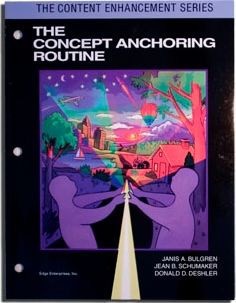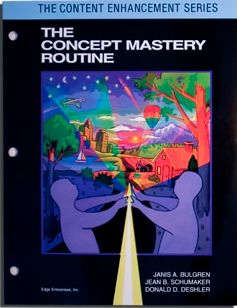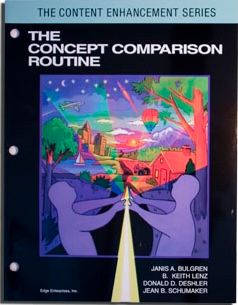The Concept Comparison Routine (Printed Manual)
$31.00
Newly Added!
A Routine for Teaching Concepts
Save this product for later
The Concept Comparison Routine (Printed Manual)
Product Details
Teachers use the Concept Comparison Routine to help students compare and contrast key concepts by exploring characteristics of each concept and then distinguishing between the concepts that were similar and those that were different.
Within any subject area, there are always important concepts that are similar but not the same. Take math, for example. Fractions and decimals are similar, but they are not the same. In social studies, democracy and socialism are similar but not the same. What’s a good way to help students understand each of these concepts individually and as they relate to each other?
One way to do this is with the Concept Comparison Routine. Using a graphic organizer called a Comparison Table, students, with the teacher’s guidance, begin by identifying the characteristics of two or more important and related concepts. Next, they identify ways in which the concepts are alike and ways in which they are different. They then identify larger categories to which these similar and dissimilar characteristics belong, and develop a summary of how the concepts are alike yet different. This routine is good way to teach analytic thinking.
This instructor’s manual provides step-by-step instructions on how to introduce this routine to students and use the routine over time.
Learn More about the research behind The Concept Comparison Routine
Please note that professional development, coaching, and infrastructure support are essential components to effective implementation of SIM instructional tools and interventions. It is highly recommended that you work with a SIM professional developer. SIM Professional Development is tailored to student needs. Fill out this form to tell us about your situation and to request professional development.
You May Also Like
Newly Added!

The Concept Anchoring Routine (Printed Manual)
The Concept Anchoring Routine (Printed Manual)
A Routine for Teaching Concepts
$31.00
Newly Added!

The Concept Mastery Routine (Printed Manual)
The Concept Mastery Routine (Printed Manual)
A Routine for Teaching Concepts
$31.00
Newly Added!

The Concept Mastery Routine (PDF Download)
The Concept Mastery Routine (PDF Download)
A Routine for Teaching Concepts
$31.00
Display prices in:USD
